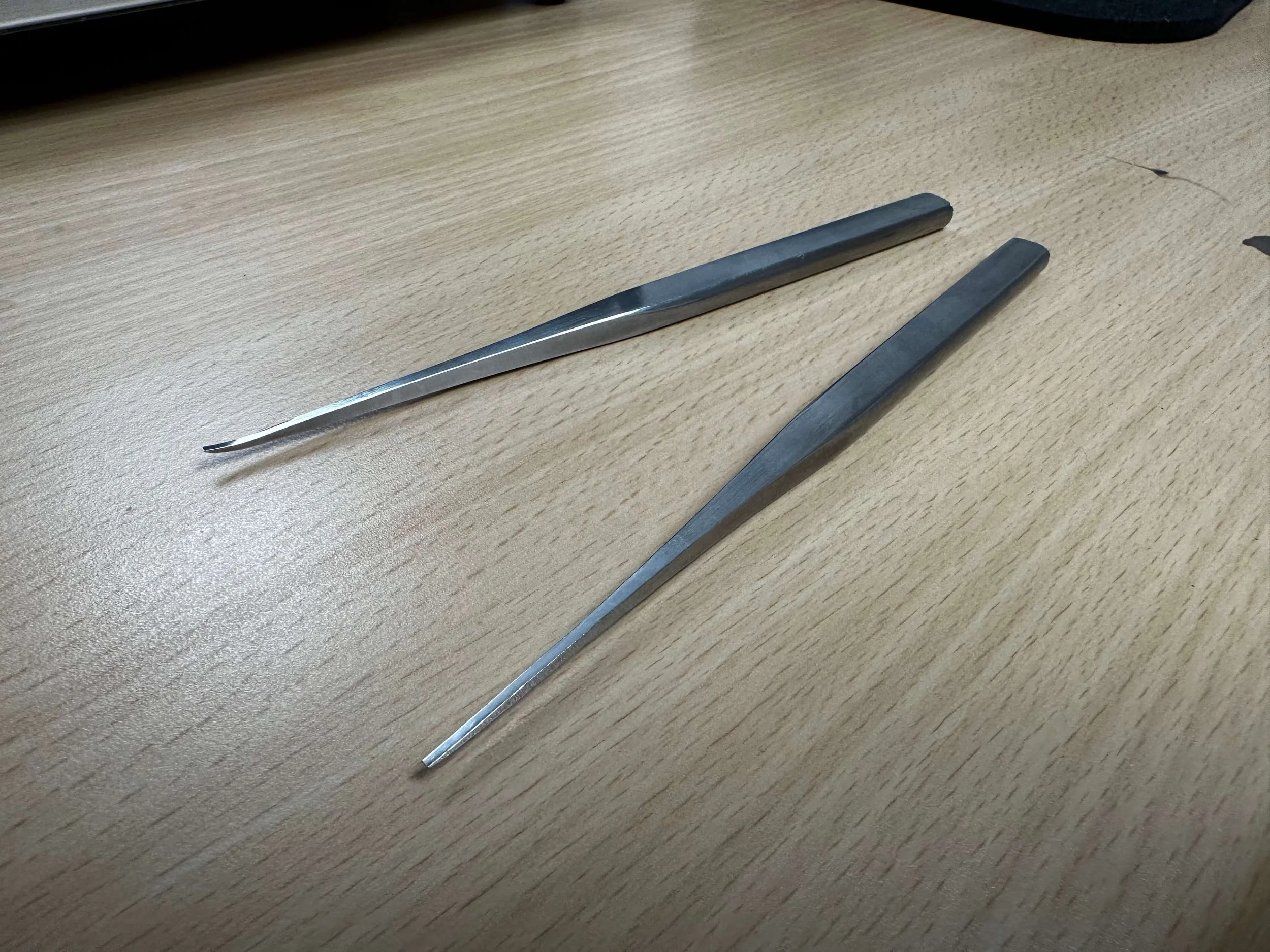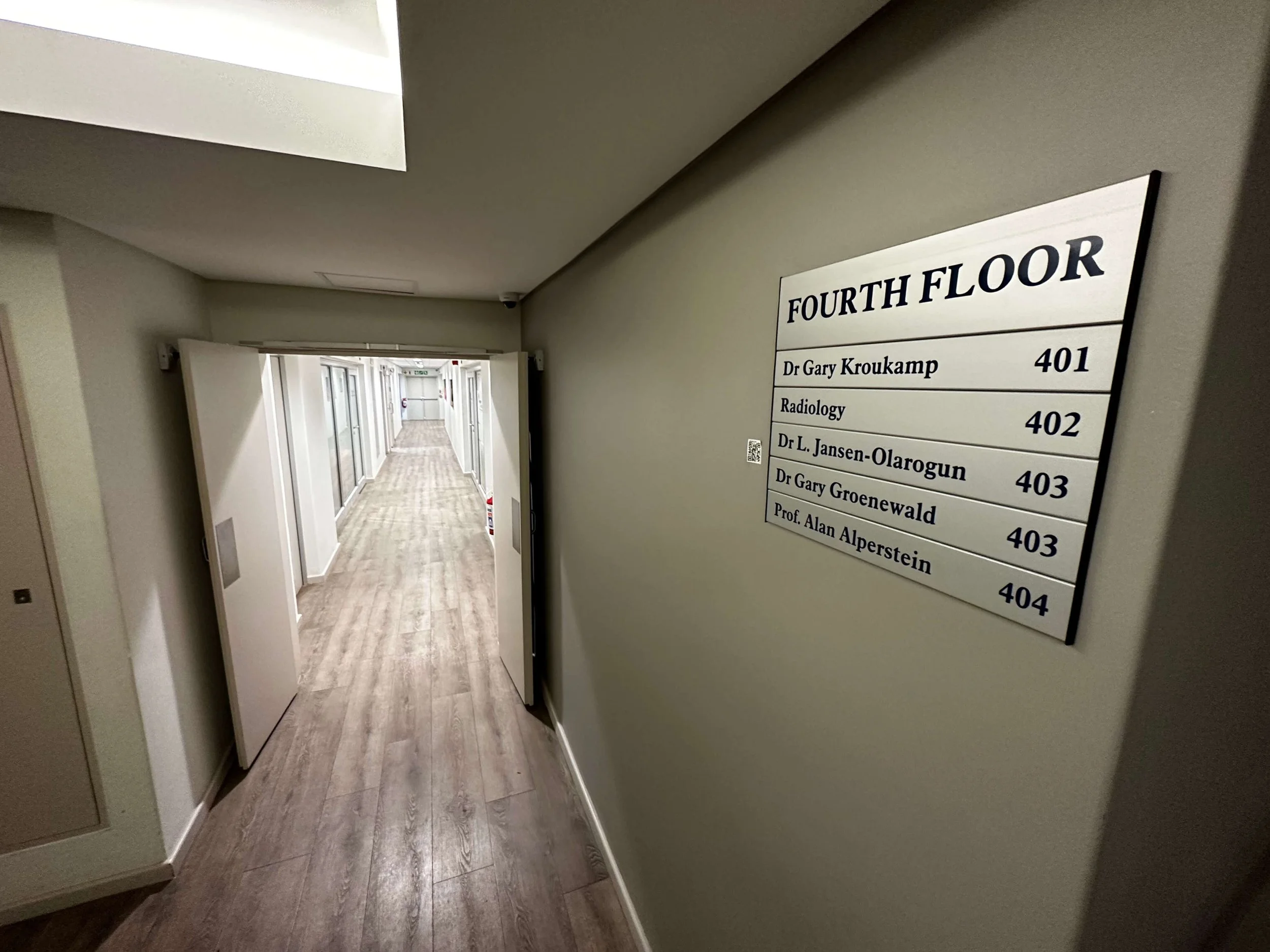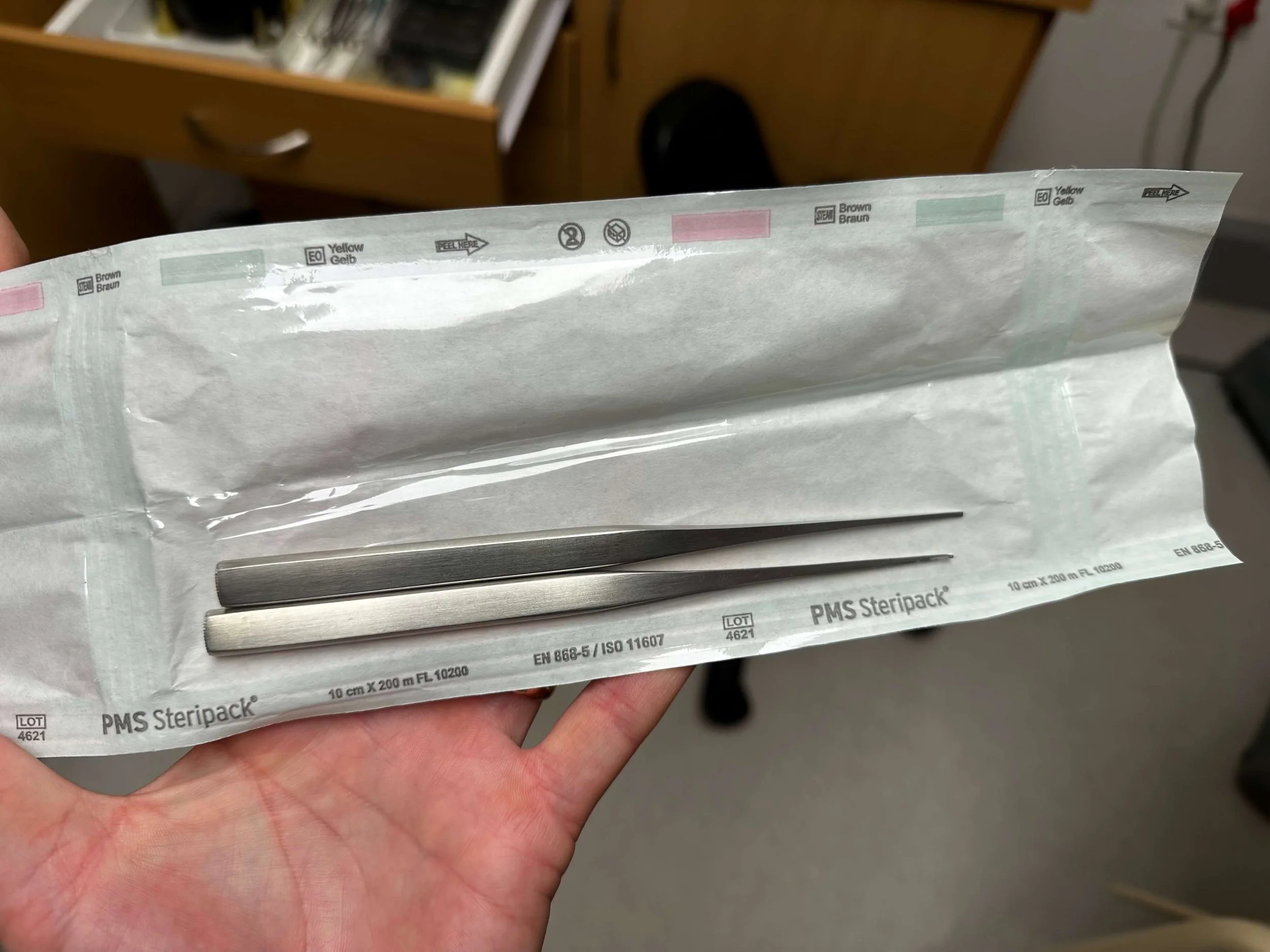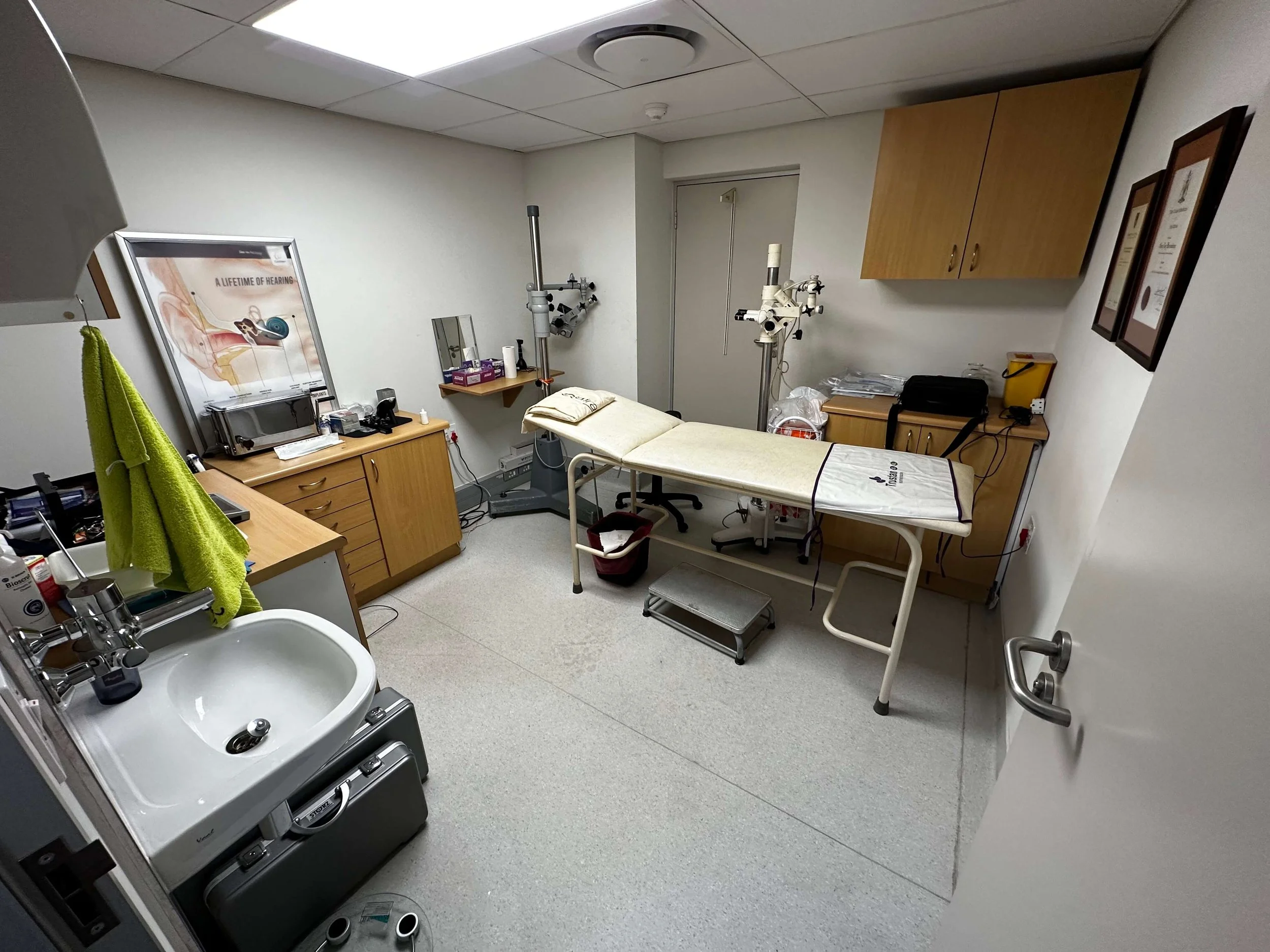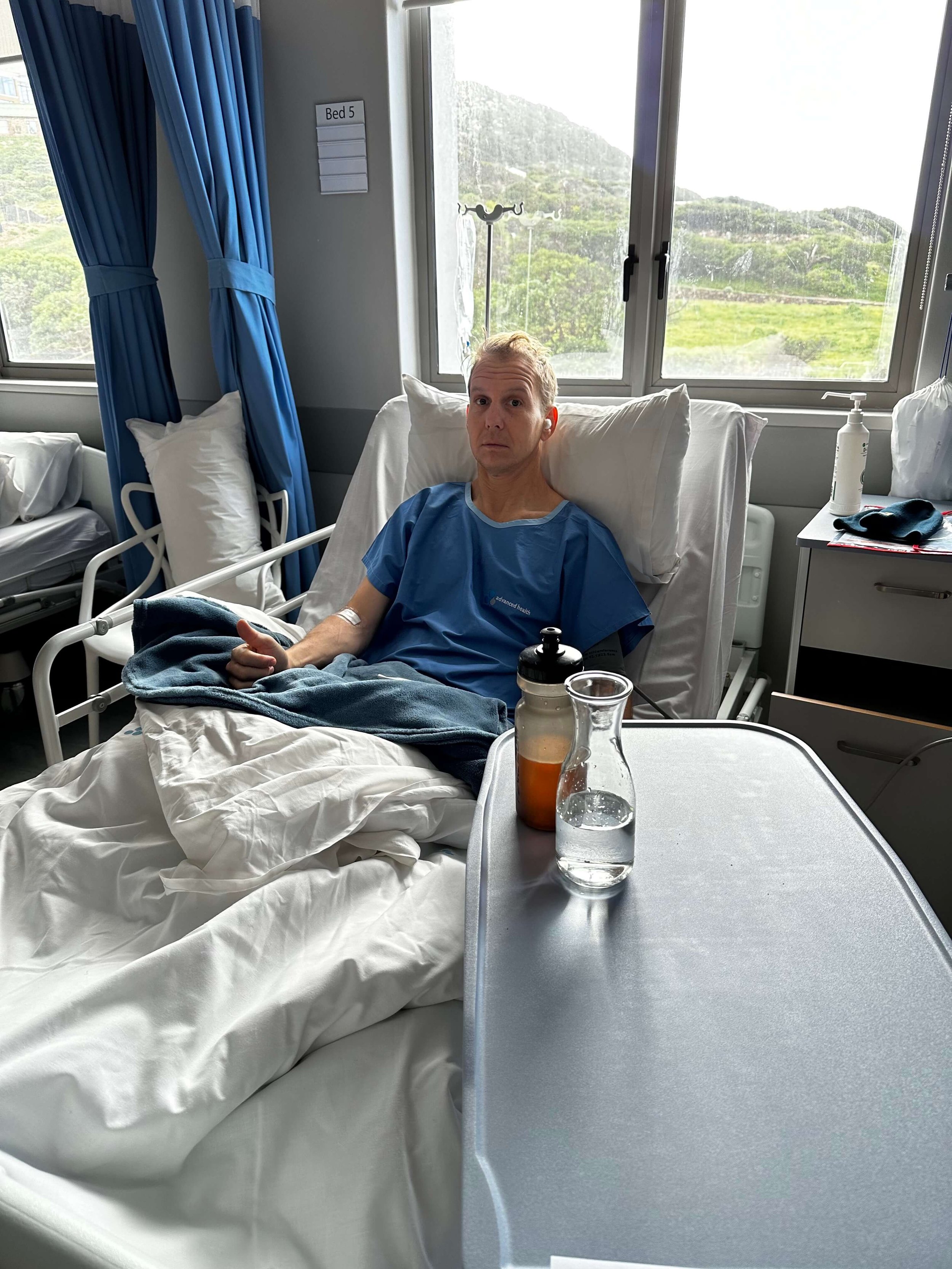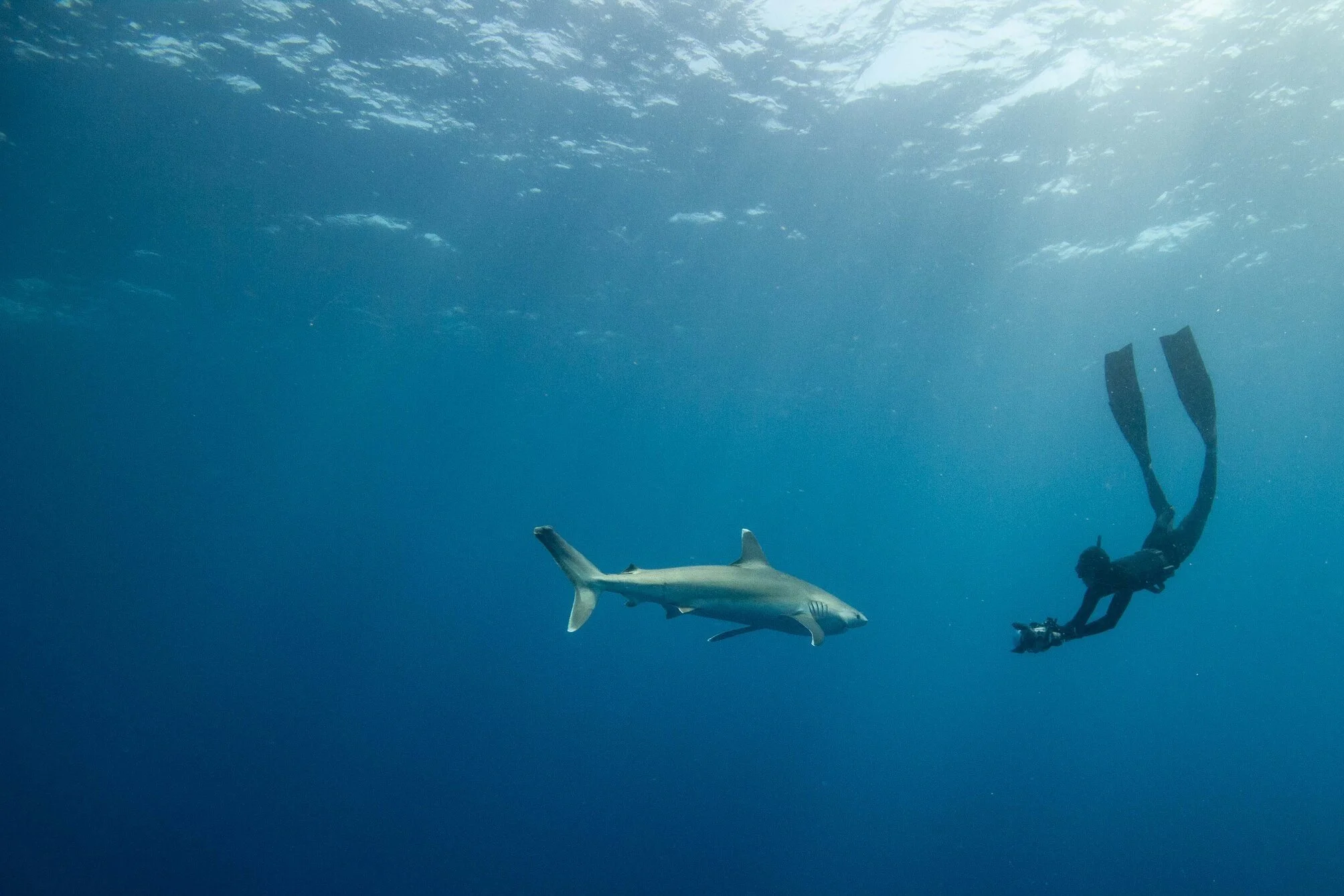Things to Do in Cape Town if you’re in town for IMCC7 2024
Image: https://scbmarineprogram.org
Wamkelekile, Wamukelekile, Welkom, Avuxeni, Dumela, Welcome, Howzit!
Cape Town’s identity is intimately tied to its waters - the sea is in our blood. Once a key refuelling station for the Dutch East India Company, Cape Town’s history stretches back even further to the Khoekhoe and San Indigenous peoples, who lived as nomadic pastoralists and hunter-gatherers, relying on the land and sea for survival.
Cape Town’s deep connection to its coastline remains strong today.
Nearly every local seems to have a passion for outdoor activities, and it’s easy to see why.
In a single day, you can hike up the scenic Lion’s Head, surf the waves at Muizenberg Beach, and explore the kelp forests in False Bay by boat, snorkel or SCUBA.
As you prepare for the International Marine Conservation Congress (IMCC7), we’ve curated a list of activities and tours to enrich your stay, whether you're exploring local ecosystems or supporting communities.
Welcome to Cape Town..
If you’re looking for activities for marine conservation practitioners - guided by a marine biologist tour guide and a local fishing community member - then look no further!
Not only are our flagship tours available, we’ve created 3 amazing day tours specifically to support local communities for the days following the conference.
The Cape of Good Hope
Beneath the Surface
Beyond the scenic views of Table Mountain lies a truly enchanting world - some, like us, call it magical. The kelp forests have become a central beacon for divers and adventurers alike, a refuge and a place of connection & healing. Join any of the facebook communities or Whatsapp groups and you’ll realise how many people live their lives centred around this enchanting forest.
The Great African Seaforest - home to the only giant bamboo kelp forest in existence - served as the backdrop for the acclaimed documentary My Octopus Teacher and the SeaChange movement it sparked.
As the Indian and Atlantic Oceans converge, they bring contrasting temperatures and nutrient flows, sustaining a high productivity and variety of species - you never really know what you’re going to find.
For those considering a dive, timing is crucial. Atlantic dive sites often offer clearer visibility during the summer months, particularly following strong southeasterly winds. Conversely, the False Bay sites reveal their treasures best during the winter. Whether you’re a seasoned diver or a curious novice, the range of sites, proximity to shore and shallow depth mean you’re very likely to find your sweet spot. This ocean is powerful, reach out if you’d like some recommendations on where to go, or who to contact to arrange a dive.
Credit: Hannah Tihen
How to get Underwater
While booking your ticket and preparing for the conference, you may have noticed that IMCC has been promoting two exciting field excursions: the Cape RADD “Snorkel for Science” program and a visit to the Southern African Foundation for the Conservation of Coastal Birds (SANCCOB). For more information on the IMCC7 field trips, click here. Bookings may have closed but there are alternatives.
From the Mountains to the Ocean
Start your day with a stunning sunrise hike up Lion’s Head (find the trailhead here). Enjoy a healthy breakfast at Nourish’d, then head to Cozy Bay for a dip in the icy Atlantic. This hidden gem, nestled between giant boulders with the Twelve Apostles as a backdrop, is a local favorite. Look out for the Cape fur seal colony. Some of the stunning beaches in the area are Camps Bay and Clifton if the wind is Southely. Or Muizenberg, Kalk bay or Glencairn if Northerly.
After a day in the sun, wrap it up with a visit to the Oranjezicht Farmers Market, which takes place on Wednesday evenings and Saturday/Sunday mornings. Its fun, local and oh so tasty!
Learn South African History
For those intrigued by Cape Town’s rich culture, the city center is a treasure trove of historical significance. Start at the District Six Museum, where the story of a vibrant community displaced during apartheid unfolds. Wander through the colourful streets of Bo-Kaap, celebrated for its brightly coloured houses and Cape Malay heritage. Don’t miss the Castle of Good Hope, South Africa’s oldest colonial structure, where you can immerse yourself in the city’s military history. A visit to Robben Island—where Nelson Mandela was imprisoned—offers profound insights into the struggle for freedom at the Apartheid Museum.
As the day comes to a close, consider taking the cable car up Table Mountain for a stunning sunset, or embark on a short hike up Kloof Corner and back down on the last cable car. Check times here.
Explore the Cape Peninsula
At the southern tip of Cape Town, almost a world of its own, you’ll find Cape Point Nature Reserve. (We offer day tours with a marine biologist). Encounter local wildlife and experience the dramatic landscapes of the Cape of Good Hope. Stop along the way at Boulders Beach, home to the charming African penguin, take a dip at Windmill Beach or in one of the many tidal pools (Dalebrook is my favourite). Take an easy stroll through the vibrant fishing village of Kalk Bay and have lunch at one of the many restaurants along the strip (Salt, Olympia, Ohana, Brass Bell).
If you're feeling adventurous, rent a surfboard and wetsuit at Muizenberg - where every wave is a party wave. All the surf shops rent gear but perhaps check out Surf Emporium first. Finish the day with a scenic drive along Chapman’s Peak drive.
For Rainy (or Windy) Days 😳
Visit the bustling V&A Waterfront, where you can shop till you drop. Its also 2 minutes walk from the amzing the Two Oceans Aquarium (I’m may be biased, but it really is amazing).
Art enthusiasts will appreciate the Zeitz MOCAA, dedicated to showcasing contemporary African art. For a touch of history, the Iziko South African Museum in the Company Gardens offers fascinating exhibits, and the Planetarium provides a mesmerising glimpse into the cosmos. After a day of exploration, indulge in delightful afternoon High Tea at the iconic Mount Nelson Hotel. If you’re in the mood for a film, wrap up your day with a movie at the quirky, independent, Labia Theatre next door, known for its unique atmosphere and screenings.
For wine lovers and explorers
No visit to Cape Town would be complete without a stroll through the enchanting Kirstenbosch Botanical Gardens. Enjoy a leisurely picnic, try their famous scones, or hike up Skeleton Gorge for a more adventurous experience, returning via Nursery Ravine.
In the afternoon, make your way over to Constantia - the wine area, within the city, boasts some of the finest vineyards in the world. The Constantia Wine Route is one of the oldest wine producing areas in the country. The Glen Constantia or Beau Constantia are great for wine tastings and charcuterie boards.
If you’re looking to go further afield then the hour’s drive is well worth the WineTram in Franschhoek or drive along the famous wine route in Stellenbosch. I’m yet to find a bad wine farm but the Babylonstoren gardens are amazing, as is the Delaire Graff Estate, or book a tour and admire Dylan Lewis's captivating sculpture garden.
Further Afield - The Garden Route
If you're looking to discover more adventures along the Garden Route, reach out to us, and we'll happily provide you with an itinerary and contacts tailored to your interests.
What to eat
South Africa is often referred to as the Rainbow Nation due to its diverse and multicultural society, and that diversity is reflected not only in the many languages spoken but also in the variety of culinary options available.
If there’s a singular flavor that defines Cape Town, it is surely found in the kitchens of the city’s Cape Malay community. Incorporating both European and Asian influences—a blend borne from trade and colonialism—Cape Malay cuisine tells the story of the Cape’s colorful history.
Some iconic Cape Malay dishes include bobotie, a spiced minced meat dish topped with a savory egg custard; denning vleis, a slow-cooked lamb dish flavored with tamarind for a tangy twist; and samoosas, crispy pastry triangles filled with spiced meat or vegetables. For heartier fare, bredie, a traditional stew often made with tomatoes and lamb, is a must-try. And for a sweet finish, the Cape Malay version of koeksisters, spiced and less sugary than their Afrikaner counterpart, makes for the perfect treat.
Pair these delights with a glass of local wine, as the Cape Winelands (Constantia, Stellenbosch, Franschhoek) are renowned for producing some of the world’s best varieties.
In Cape Town, it's easy to feel overwhelmed by the myriad dining options available! But don’t worry; we’ve got you covered. One of the best ways to explore a variety of Cape Town's top restaurants in one spot is the recently opened Time Out Food Market. A must-try here is Barakat, where Cape Malay cuisine is given a thoroughly contemporary twist.
Another great and authentic option to indulge in Cape Malay cuisine is Bo-Kaap Kombuis. The dishes they prepare are a reflection of the surrounding Bo-Kaap neighborhood, its rich history, heritage, and the love for people of all races, religions, and creeds.
If you’re curious about trying sustainably sourced seafood, Galjoen is the perfect spot. Located at 99 Harrington St., they offer a tasting menu that showcases the best seafood South Africa has to offer. Their approach is simple: they only serve what is responsibly caught locally. If it's not from South Africa, it doesn’t make it onto the menu.
If you're a breakfast lover, there are a few hidden and trendy gems you won’t want to miss. Strangers Club, located in Green Point, offers a delicious breakfast and lunch menu, along with a charming shop at the back that sells antiques sourced from across Africa. One of the most unique spots for breakfast is Our Local. Imagine enjoying the perfect brunch in your botanist friend's greenhouse! Situated inside an antique store and nursery on Kloof Street, right in the city center, they serve a fantastic Shakshouka, and nearby, you'll find delightful boutiques and vintage shops to explore. Looking to support a plant-based and zero-waste café? Try Nourish’d! They offer delicious vegetarian and vegan juices, smoothies, sandwiches, and more, and if you want to learn more about their efforts to provide healthy plant-based food with a focus on sustainability and ethical practices, be sure to visit one of their locations.
Nestled on the peninsula is Kalk Bay, a charming yet vibrant fishing village. For a quick coffee or breakfast, stop by Chardonnay Deli or Ohana, and don’t miss Olympia Bakery for some of the best pastries around. After a day of exploring, Salt is the perfect dinner spot to unwind. Enjoy a glass of red wine by candlelight or share a tapas-style meal with friends, soaking in the relaxed atmosphere.
If you need a healthy snack between diving in the kelp forests and exploring the peninsula’s coastline, be sure to stop by Blended Health Café in Glencairn. With a fantastic plant-based menu and fresh juices, it’s the perfect spot to refuel and recharge.
Transport and Safety
For us, the rules are simple:
Don’t walk around dark places at night, that goes for most places (Yes, we have uber).
Don’t leave valuables visible in cars (put stuff in the trunk).
Don’t be flashy - leave non-essentials that draw attention to you at home.
Ask us if you have any questions: bookings@rockhopper.co.za. Seriously, just ask!
The IMCC7 website provides comprehensive information to help you navigate the city smoothly and safely.
You can read the Transport section for tips on getting around Cape Town: IMCC7 Transport Guide.
For an overview of Safety measures, including insights on staying secure during your visit, check out the detailed guidelines here: IMCC7 Safety Information.
5 easy ways anyone can feel confident and be more impactful in online meetings
Here are 5 simple tips I've learnt from 10,000 hours of presenting shark stories online.
See for yourself in your next social hour for hybrid teams: https://www.rockhopper.co.za/online-experiences.
Here are 5 simple tips I've learnt from 10,000 hours of presenting shark stories online.
See for yourself, book your next virtual social hour for hybrid teams.
Bookings make you happier, guaranteed. Plus, they support our Non Profit Organisation.
1 - Your voice matters (more than your video)
Ensure your audience stays engaged with clear and crisp audio.
In a world full of distractions and short attention spans, it's easy for your audience to tune out.
Unclear audio is frustrating and tiring.
Your next great idea needs everyone’s attention.
Here's how:
Use a plug-in microphone (the headphones that came with your phone work great).
Or, consider buying a lapel or USB microphone for portable, high-quality sound.
Use your regular computer speakers - the built in echo cancellation is magic!
I use the Rode Lavalier GO
Avoid:
'Standard' wireless headphones as microphones; they're great for listening but not for speaking.
2 - Frame yourself properly.
Avoid awkward angles or distracting backgrounds.
Our eyes are drawn to 4 main points in any photo or video.
Create a more pleasing view by dividing our screen into 9 boxes as below.
Use the Rule of Thirds
Align your eyes with the top horizontal line, ideally just off centre with one eye on the top left, or right intersection
(It's okay if the top of your head is slightly cut off.)
Position your webcam at head height,
and place your head near the top of the screen.
3 - Stay connected and powered up.
Plug it in. All of it!
Always keep your devices plugged in for maximum efficiency. Relying on battery power reduces computing capacity.
Use direct cables like ethernet and chargers for your laptop, microphone, and continuity camera (iPhone, Android, or DSLR).
4 - Use a backlight for ambiance.
Invite attendees into your space.
Enhance your virtual environment with a soft, inviting glow placed 2 meters (6 feet) behind you.
Tip: Orange or blue hues, like those from salt lamps, work best.
Use an ultra-low-energy bulb or a cardboard sleeve to reduce brightness.
5 - Use a Vignette
(rather than, or with, a blurred background).
Download this vignette to bring your audience into your world - it removes distraction and directs attention.
You can add a vignette (and a text overlay, such as your name / position or logo) with powerful free software like OBS Studio.
Bonus: My packing list
Rode Go Lavalier Microphone (plus phone adaptor)
Laptop and charger (+ free OBS Studio / paid Ecamm live software)
Ethernet cable and adaptor
LED Video lights (x2) (±$40 each on Amazon)
Have questions?
I had the surfers ear operation, this is my experience
Spending a lot of time in cold water can result in your ear canal closing up. This can trap water, causing discomfort and infection. The bony exostoses are removable, here’s my experience of the Surfer’s Ear op.
This is not medical advice - I am not a doctor (I studied fish).
I am also not earning anything from this article.
Have questions? Send me an email.
Cape town, South Africa - July 2023
Bilateral Exostoses (Surfer’s Ear) - the Chisel Method.
Take Home: I’d do it again.
The details.
I am quite familiar with Ear Nose and Throat specialists, thanks to my lifelong relationship with hay-fever. Its always the same: avoid dust, pollen, smoke, cats. Use a cortisone spray daily, get a new vacuum… I’ve mostly ignored that advice.
Im also fortunate to have been submerged in an ocean, almost daily, for the last 14 years. Im a marine biologist, happiest living by the tides. And the wind. There’s a lot of wind in Cape Town.
Sun protection is a must, ear protection is a somewhat newer concept.
Exostoses are multiple, benign bony growths within the external auditory canal in response to repeated exposure to cold water. Basically, your ear canal closes over time, assumedly to stop cold water from reaching your ear drum. These growths can be removed surgically by chisel, drill or ultrasonic blade.
Why did I have the op?
I was plagued by constant bouts of painful ears, minor infections - general discomfort. Made worse each time I got into the ocean. I could not find any ear plugs that worked, and diving was almost not an option anymore.
I was nervous to surf bigger waves, to dive and photograph Cape Town’s remarkable kelp forests. I avoided wetting my ears in the shower. My enthusiasm to get into the water was curbed by my nervousness of getting my ears wet.
One particularly bad infection lead me to an ENT who confirmed the exostoses. Lets call it 80 & 85% closed on the left & right ears respectively (its hard to tell exactly as your ear canal is bendy).
The arrival of our newborn baby girl (Charlie Grace) meant that I needed to be home for a while.
I got sign off from my wife and pulled the trigger.
The build up.
I visited 3 Ear, Nose & Throat specialists for this particular case, sort of by mistake.
The first seemed a little too self-assured and was vague about which method they’d use. I also wasn’t sure what to ask. But they did show me my ear canal with a nifty usb mini-camera - available online apparently. I also learnt that ear canals are not pretty.
The Second ENT has stopped using the Rotary Drill Method as there is concern over the high-pitched sound of a drill damaging one’s eardrum. The Rotary drill is more of a cutter than a drill. They also only operated on one ear at a time which would mean 2 x hospital visits, 2 x doses of general anaesthetic and 6 months out of the water.
They referred me to Dr Gary Kroukamp who specialises in The Chisel Method.
The coffee table in Dr Gary Kroukamp’s waiting room is an old, solid, door with a solid glass top. Its quite beautiful, but also “incredibly heavy" according to his secretary.
He ushers me into his office and takes a look in my ears, confirming what I already knew: ‘its time for the op’.
I was concerned that my ears may have received more abuse than most, he nodded but did not seem phased. He suggested we do both ears at the same time, next week. “You’ll be home the same day, and back in the water in 2 weeks”. TWO WEEKS!? Hmm.. too good to be true?
The procedure - The Chisel Method
Dr Kroukamp accesses the offending bone(s) with 2 types of chisels, pictured below. They’re actually quite beautiful, razor sharp, heavy in your hand. Chisels mean that there is no need to ‘butterfly’ your ear open to gain access, as per other methods. He goes in down your existing ear canal, hence the speedy recovery.
Compared to drilling, the chisel method seems a no brainer. It requires light tapping to chip away what is actually a tiny bump of bone. Plus, not requiring surgery to open up and access the ear canal means a less invasive procedure.
I was concerned to learn that its apparently quite normal for ear drums to be nicked during the surgery - about 1-in-10. But a clean slice from a chisel is often less damaging than a drill, that could rip the eardrum, normally healing within 2 weeks, so I’m told.
Exostoses chisels used for my ‘surfers ear’ operation.
How much did it cost?
Total cost: R44,714.00
This procedure can be done at a regular hospital or a day hospital / clinic, each with their own rates. I had my operation at Harbor bay day clinic in Simonstown, Cape Town - it was cheaper than going to a ‘regular’ hospital.
Check with your doctor, medical aid and/or gap cover.
Breakdown:
Initial consult (cash):
Dr Kroukamp, ENT: R1,400.00
Surgery (covered by Discovery Health Coastal Core Medical Scheme, I did not need to claim from my Gap cover):
The anaesthetist: R9,253.00 ZAR
Dr Kroukamp - Ear Nose & Throat surgeon: R12,184.00 ZAR
Harbour Bay day clinic: R21,876.00* ZAR
*Medical Aid did not pay R1.27 of this.
Dr Kroukamp’s rooms (This is not the theatre).
The Day of:
“You look ready to run”
“I am”
“Ok, let’s play a game - we’ll give you some of this stuff (anaesthetic) and see how far you get”…
(I was taken home by my wife 6 hours later.)
I really dislike hospitals - its not my natural habitat. I was nervous. I arrived at the day clinic at 7am, first in line, was checked in and waited. I could have run a mile. I was wheeled in to theatre at 8am and finished up at 10:30am (apparently).
At 1:30pm I awoke, groggy, reeling. I would not have been capable of driving home. I was given instruction to keep my ears dry until the checkup a week or so later, to change the cotton wool daily and call if I had any questions.
I was shuffled to the car, driven home, taken inside and fell asleep for the afternoon. I woke for dinner, took a painkiller, and slept the rest of the night. That night my ears bled on my pillow (hint: cover your pillow with a towel for a few days).
3 hours after the procedure in Harbour Bay medical centre. Dazed.
Day 2: I woke up late expecting sharp pain in both ears but was surprised how little pain I felt. Everything was muffled due to the pack* and cotton wool in each ear. I was OK! No dizziness, nausea or (serious) pain.
*Both ears were packed with some kind of ‘pressure pack’ to aid healing. Charlie’s 1month old cries were muffled for 2 weeks, but I had no bandages, stitches, or serious pain. Having to sleep on my back for 2 weeks was the biggest physical inconvenience.
2 days later: Sounds continue to be muffled, especially when multiple people talk at once. The odd occasional short, sharp, jolt of pain. I was still surprised by how little pain I felt, and almost no bleeding. Is it still coming?
I did take over-the-counter pain killers twice in the week following the procedure, I could have gone without.
1 week later: The follow-up appointment. Dr Kroukamp took out the pack, painlessly. There was much less ‘stuff’ in there than it felt like. I was expecting a thumb size pack of cotton wool - it looked more like tiny bits of washed up beach plastic. I was sent on my way with 5 days of antibiotic drops to be used twice a day. Call or whatsapp if I have any questions.
I felt pretty near recovered at this stage - no pain or bleeding, no anaesthetic aftereffects, and a week of rest and healthy living.
2 weeks later: A 10minute checkup, with a tympanometer to check my ear drum integrity and sign off that Dr Kroukamp was happy with the recovery - I could now get my ears wet.
3 weeks later: I went snorkelling! Ok, so I did wait an extra week, just to be sure. It felt a little strange getting water in my ears for the first time in more than a year, but there were no hassles - it was fantastic. I do now dive with sticky tack in both ears, having perfected the art of sculpting an ear shaped, purge-able, plug.
The following day I surfed one of my favourite waves, and was barrelled on my last wave. When enthusiasm outweighs skill I believe this a rare sign of more productive ocean adventures to come, and a job well done. Lucky fish.
Thank you Dr Gary Kroukamp for renewing my underwater enthusiasm.
See you on the water, or sign up to get more of this in my fortnightly email briefing.
7 Fascinating Shark Facts
Sharks have long been the embodiment of oceanic mystery and power. From their ancient origins to their unparalleled senses, these majestic creatures continue to captivate our imaginations. In this article, we will delve into the world of sharks, uncovering seven mind-blowing facts that highlight their incredible adaptability, astonishing abilities, and remarkable behaviours.
Love Sharks? Meet a Real Life Shark Scientist for a 1 hour online Experience for kids classes, families events and corporate teams.
Ancient Survivors:
Sharks boast an awe-inspiring evolutionary legacy, dating back over 400 million years. This makes them older than dinosaurs, and they have remarkably survived multiple mass extinctions. With their ability to adapt to various environments, sharks have diversified into over 500 different species. The frilled shark, one of the oldest surviving shark species, has remained virtually unchanged for the past 80 million years. This longevity and resilience showcase their status as true survivors of the deep. Read why Great White sharks outlived Megalodons in The Conversation.
Super Senses:
Sharks possess an extraordinary array of senses that contribute to their exceptional hunting prowess. While their sight is keen, their sense of smell is particularly remarkable. Equipped with olfactory bulbs, sharks can detect tiny traces of blood in the water, but only if there is a scent trail leading them to the source, like a trail of breadcrumbs.
In addition to their sense of smell, sharks possess specialized receptors known as ampullae of Lorenzini (image above). These small jelly-filled pores, scattered on their snouts, enable them to detect electrical fields produced by living organisms. This unique electroreception assists them in finding hidden or buried prey, much the same as a metal detector allows us to find lost jewellery and coins.
Swift Swimmers:
Most sharks can swim at an average speed of 5 miles per hour (8 km/h). The more streamlined the body and the more lunar, or half-moon', the tail, the more speed it can gather (think great white shark tail).
One standout among these swift swimmers is the shortfin mako shark. Often referred to as the cheetah of the sea, this species can reach speeds of up to 45 miles per hour (72 km/h), making it one of the fastest fish in the ocean. With such agility, makos can pursue agile prey like tuna and swordfish in the deep, open ocean.
Watch Harvard professor George Lauder sharing the various parts of shark anatomy.
Ever-Replacing Teeth:
Sharks are famous for their rows of sharp teeth, which vary from species to species. Unlike humans, sharks do not have rooted teeth. Instead, their teeth are embedded in multiple rows, with new teeth constantly developing to replace the old ones. A single shark can shed thousands of teeth over its lifetime, and some species may produce as many as 21,000 teeth! This remarkable adaptation ensures that sharks teeth are always sharp.
The shape of shark teeth varies depending on the species and diet. For example, the great white shark's teeth are large, serrated, and designed to cut through large prey like seals. In contrast, the teeth of the whale shark, the largest fish in the world, are small and numerous, as they primarily feed on plankton and very small fish. This incredible diversity of dental adaptations allows different shark species to thrive in a wide range of ecological niches.
Remarkable Migrations:
Sharks undertake some of the most awe-inspiring migrations in the animal kingdom, traveling vast distances between their breeding and feeding grounds each year, sometimes arriving or leaving on the same date each year!
Frankie the bull shark swam 1500 miles from her Summer to her Winter home, and back, every year for 4 years, passing the exact same location on the same date 3 years in a row (Have you seen our shark tracker?).
One of our tagged Tiger sharks, Seriea, swam 18000 miles in 16 months. That’s almost 7 times across the US and is a world record - the longest track ever recorded for a Tiger shark.
Ecological Keystone Species:
Sharks play a vital role in maintaining the balance of marine ecosystems. As apex predators, they help regulate populations of prey species, preventing imbalances. By culling the weak and sick individuals, sharks contribute to the overall health and diversity of the marine environment. Their absence has cascading effects on food chains and ecosystems.
A basic food web and how sharks enable oceans to heal. See more like this at www.airbnb.com/shark
Ancient Legends and Cultural Significance:
Sharks have left an indelible mark on human culture throughout history. Revered in various mythologies and folklore, they hold symbolic significance in cultures around the world. For some indigenous communities, sharks represent powerful deities or ancestral spirits. In Polynesian and Hawaiian traditions, sharks are regarded as guardians and protectors of the sea. These cultural connections demonstrate the enduring impact of sharks on human imagination and reverence for the natural world.
Conclusion:
Sharks continue to astonish us by showing us that they can learn and remember, they are able to teach other sharks where to be and when to be there. Meet a Real Life Shark Scientist to see more of these remarkable discoveries.
Here at RockHopper we aim to protect these magnificent predators, ensuring their continued existence for generations to come. Both our in-Person and our Online Experiences support our work. Join us today.
Learn more about sharks in an interactive online Experience with a Real Life Shark Scientist -
What Marine Mammals can you see in Cape Town, South Africa?
If you are looking for an amazing marine wildlife watching destination, look no further than Cape Town, South Africa. This beautiful city is home to numerous marine mammals from dolphins to whales, cape fur seals and even Otter.
If you are looking for an amazing marine wildlife watching destination, look no further than Cape Town, South Africa. This beautiful city is home to marine mammals from dolphins to whales, cape fur seals and even Otter. The best time of year to see marine mammals in Cape Town depends on the species you're hoping to spot.
Dolphins
Dolphins can be seen year-round in the waters off Cape Town.
Among the many interesting dolphins that can be seen in Cape Town, South Africa, is the Heaviside's dolphin. This diminutive creature is one of the rarest dolphins in the world, and is easily distinguished by its small size and distinctive coloration. Heaviside's dolphins are dark gray or black on top, with a light gray or white belly. They typically grow to about six feet in length, making them the smallest dolphin species in the area. These playful animals can often be seen riding the waves near the shore, and are known to interact with humans.
Another interesting dolphin species that can be seen in Cape Town is the bottlenose dolphin. These dolphins are much larger than Heaviside's dolphins, growing to about twelve feet in length. They are also more social creatures, often traveling in large pods. Bottlenose dolphins are gray or bluish-gray on top, with a white belly. They are very acrobatic animals, and are often seen leaping out of the water.
Finally, another intriguing dolphin species that calls Cape Town home is the humpbacked dolphin. These dolphins are named for their large dorsal fins, which give them a humped appearance when they swim. They are dark gray or black. Common Dolphins are another species encountered more regularly in the Summer months, November - May. These are primarily fast-swimming offshore dolphins that can form super groups with 1000's of individuals traveling together. These fast, sleek hunters are exciting to watch as they move through the ocean on the search for food.
Whales
(Psst.. our founder, Justin, had the privilege of working on this remarkable sequence!)
Whales migrate to the area between June and November. If you're interested in seeing whales, some up to 18metres in length and weighing more than 80 tons, then the best time to visit is between June and November. This is when Humpback and Southern Right whales migrate to our waters to give birth.
Species you can readily encounter include southern right whales, Bryde's whales, Orca and humpback whales. Southern right whales can grow up to 18 meters long and weigh over 100 tons and can be seen year-round in the waters off Cape Town, but they are most commonly seen between June and November when large numbers arrive in Cape Town to calve in the sheltered bays. So if you're looking for an amazing wildlife experience, be sure to add whale watching to your itinerary when you visit Cape Town.
Bryde's whales can also be seen in the area, although they are less common than southern right whales. These moderate-sized whales can reach lengths of 12 meters and weigh up to 35 tons.. Humpback whales are typically seen in Cape Town between June and November. During this time, they migrate from their feeding grounds in Antarctica to their breeding grounds off the coast of Africa. These massive mammals can grow up to 16 meters long and weigh as much as 40 tons. There is an annual migration of younger male Humpback whales that form a playful superpod as they move down the West coast of South Africa, made famous by this Netflix sequence that our founder, Justin, had the privilege of working on.
Orcas, also known as killer whales, are the largest member of the dolphin family. Cape Town's famous pair - Port and Starboard - are known to be shark hunters, blamed for the disappearance of sharks from certain areas of South Africa. When catching shark species such as great white, seven gill and bronze whaler sharks, normally eating on their liver and heart. They are easily recognizable by their black-and-white coloration and prominent dorsal fin. Orcas are found in all oceans around the world, and typically live in groups, or pods, of around 40 individuals. Though they are most commonly associated with the open ocean, orcas will occasionally venture into coastal waters in search of food.
Seals
Cape fur seals can be seen year-round on the beaches, harbours, and in the water, making them one of the most accessible (and cute!) marine mammals in Cape Town. Elephant seals, such as our yearly visitor, 'Buffel' can be spotted on Duiker island every year, normally from November - April.
No matter what time of year you visit Cape Town, you're sure to have an amazing wildlife watching experience. With its abundance of marine mammals, this beautiful city is a must-visit destination for any nature lover. So what are you waiting for? Start planning your trip today.
So what are you waiting for? Start planning your trip today!
Looking to book a tour? We offer a wide variety of tours that will allow you to see the best of Cape Town's marine wildlife.
Contact us today and we'll be happy to answer all your questions and help you plan the perfect vacation. We hope to see you soon in Cape Town.
What are some of your favorite marine animals? Let us know in the comments below.
Why is Fynbos so diverse?
Fynbos is a type of vegetation that is found only in and around Cape Town, South Africa.
Fynbos [ˈfɛinbos]
Fynbos is a type of vegetation that is found only in a specific area of the world. This area is known as the Fynbos Biome, and it is located around Cape Town, South Africa. Fynbos is unique because it is one of the most diverse biomes on Earth. There are over 6,500 different plant species found in Fynbos, which is more than in any other biome! In this article, we will explore why Fynbos is so diverse and what makes it so special.
A wide range of habitats
One of the reasons why Fynbos is so diverse is because it has a wide range of habitats. These habitats include sandstone mountain slopes, wetlands, woodlands, and heathlands. Each of these habitats has its own unique plants and animals. This means that there is a huge amount of variation within the Fynbos Biome.
Location
Another reason for the diversity of Fynbos is its location. The Fynbos Biome is situated in the Cape Floral Kingdom, which is one of the most biodiverse regions on Earth. This region has a Mediterranean-type climate, with warm summers and cool winters. This climate is perfect for plant growth, and it also means that there is a huge variety of plant life.
History
The final reason why Fynbos is so diverse is because of its history. The Fynbos Biome has been around for millions of years, and it has undergone many changes. This long history has allowed plants to evolve and adapt to their environment. This has resulted in a large number of unique plant species.
So, there you have it! These are just some of the reasons why Fynbos is such a diverse biome. If you want to learn more about this amazing place, then be sure to join our Live Tours in and around Cape Town's remarkable natural heritage.
Thanks for reading!
Don't forget to share this article with your friends and family if you found it interesting.
P.S.
Sharks are one of the most feared creatures on the planet, but what if we told you that they’re actually quite misunderstood?
Meet Justin Blake, a real life shark scientist who has dedicated over a decade of his life to understanding these amazing creatures. In this virtual Experience, you’ll dive into shark science and conservation from someone who knows them best.
Sharks are crucial for the health of our oceans – and by extension, our planet – so it’s important to learn about them and protect them. With this knowledge in hand, you can help spread awareness and make a difference for sharks everywhere.
See more and read Justin's amazing reviews on www.airbnb.com/shark
How can I save the ocean?
We’re often asked: “What can I do to help?”. Well here are our 3 top tips on making a bigger splash for the ocean.
The ocean covers two-thirds of our planet, yet we know more about the surface of Mars than we do about the depths of the sea! The ocean is home to an incredible diversity of life, from tiny plankton to huge whales. It provides us with vital resources, such as food and oxygen, and helps to regulate the Earth's climate by sucking carbon dioxide out of the atmosphere, storing it permanently in the seafloor.
Yet the health of the ocean is under threat from a variety of sources, including pollution, overfishing, and climate change. If we are to protect this vital resource, we must all take action. Here are some simple things you can do to support ocean conservation:
1 - Find (& Support) Your Closest Marine Reserve
Marine Reserves are quite simply that - protected parts of the ocean. We know that these magical places create healthy oceans, even if previously disturbed. The heal. We know where to put them, how to keep them healthy, and how they fill up with life, spillling over into the waters surrounding Marine Reserves. Keen to find your closest Marine Reserve? Check out the amazing interactive MPA Atlas website.
Below is our favourite marine reserve, what’s yours?
2 - Buy Sustainable Seafood
Choose seafood that has been certified as sustainable.
Most fish populations are in decline due to overfishing. But we can make better choices by selecting species that are more sustainable than others. Our seafood choices should be based on the way the animal was caught, how quickly they grow and reach sexual maturity, and historical fishing pressure. As a general rule of thumb you want to choose low on the food chain (herbivores over apex predators).
Here’s a list of the best apps for your country:
South Africa - WWF’s Sassi
U.S.A - Seafood Watch
UK - Good Fish Guide
3 - Watch What You Flush Down the Drain
“Water and air, the two essential fluids on which all life depends, have become global garbage cans.” ― Jacques-Yves Cousteau
Everything we flush down the drain ends up in the sea. Simply switching out the chemicals that you use in your homes to biodegradable products takes huge pressure off of the ocean, and waterways connecting us to it. From dishwashing skin products - we can choose natural, biodegradable, products.
4 - Support Ocean Conservation NGO's
(Like The RockHopper Fund)
Running an NGO is tough, particularly one focussed on conservation. Why not reach out to your favourite NGO with an offer to lend a hand. You could volunteer your time and skills, donate (any amount) monthly, join their mailing list or simply follow, like and share their bad shark puns on social media. Actions of support encourages and invigorate the passionate folks taking up the thankless task of turning the tide on ocean destruction.
5 - Book an Online Experience
What if we told you that sharks aren't actually as dangerous as you think? In fact, they're crucial to the health of our oceans. And what if we could show you how to help protect them?
By booking to Meet a Real Life Shark Scientist, you'll get an up-close look at the world of shark science and conservation, tailored to you. You'll learn about the latest research, discover why sharks are so important, and find out how you can make a difference.
Click here to learn more and read over 1100 5-star reviews for Meet a Real Life Shark Scientist.
So what are you waiting for? Get out there and book your next team building experience today! It's sure to be a fin-tastic time!












